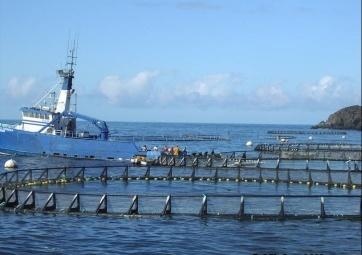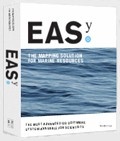

As biological oceanographers and scientists with extensive experience in academic and practical pollution and food web studies, we are aware of the:
1. potential limitations and criticism of marine aquaculture
2. rapid evolution of technology and siting practices
3. hugely extensive literature of effects and impacts
4. data gaps and needs for additional research
5. rule making and regulatory efforts in place in most economies
6. direction in the U.S. and elsewhere towards open-ocean mariculture
AquaModel can be used to examine near and far field effects of individual or clusters of farms in the coastal shelf where nearshore or open-ocean aquaculture may develop. It will model both farms with multiple, separate cages and multiple farm sites to meet this challenge.
Coastal managers tell us that the public debate and decision making by governments are advanced when models that graphically show processes and end results are used. AquaModel fulfills this requirement and provides much more flexibility and ease of adaptation than competing models that offer only benthic effects simulation.
In the past that meant "one-box" tidal prism models for dealing with eutrophication potential of coastal bays but they are not suitable for coastal shelf and more open-water aquaculture.
AquaModel provides a visually-satisfying, real-time view of the processes of waste distribution and food web assimilation to help all parties understand the extent and types of effects (both negative and positive).
1. potential limitations and criticism of marine aquaculture
2. rapid evolution of technology and siting practices
3. hugely extensive literature of effects and impacts
4. data gaps and needs for additional research
5. rule making and regulatory efforts in place in most economies
6. direction in the U.S. and elsewhere towards open-ocean mariculture
AquaModel can be used to examine near and far field effects of individual or clusters of farms in the coastal shelf where nearshore or open-ocean aquaculture may develop. It will model both farms with multiple, separate cages and multiple farm sites to meet this challenge.
Coastal managers tell us that the public debate and decision making by governments are advanced when models that graphically show processes and end results are used. AquaModel fulfills this requirement and provides much more flexibility and ease of adaptation than competing models that offer only benthic effects simulation.
In the past that meant "one-box" tidal prism models for dealing with eutrophication potential of coastal bays but they are not suitable for coastal shelf and more open-water aquaculture.
AquaModel provides a visually-satisfying, real-time view of the processes of waste distribution and food web assimilation to help all parties understand the extent and types of effects (both negative and positive).


AquaModel - now a plug-in of EASy
Overview

Aquaculture
Open Ocean and Coastal
Open Ocean and Coastal
There has been a national and international discussion and debate regarding the culture of marine fish and salmon, shellfish and seaweed. Strongly opposing views are commonly expressed about the industry, its environmental effects, sustainability and desirability for local economies and habitats.







